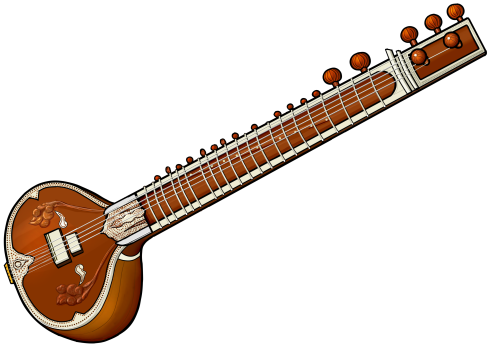sitar (Indian long-necked fretted gourdlute)
~ String instrument
Description
Soundbox made of gourd, it has 18-21 (6-7 on frets and 11-15 sympathetic under the frets) metal strings, two bridges and a long wooden neck where the tuning pegs of the sympathetic strings are attached. Used in India since ancient times, it flourished during the 16-17th before arriving at it's current form in the 18th century. It became popular worldwide in the 1950-60
Relationships
| from: | India |
|---|
| subtypes: | kachva sitar (Flat-cut gourd sitar) surbahar (Bass sitar) |
|---|---|
| derivations: | electric sitar (electric guitar variant of sitar) |
| derived from: | veena (Family of ancient Indian lute-like chordophones) |
| related instruments: | tanpura (Indian drone long-necked frettless gourdlute) |
| has hybrids: | bin-sitar (Hybrid fretted stick-zither) sursingar (19th century large North-Indian dhrupad bass-sarod) |
